- Essential Tasks for a Fruitful June in the Garden
- Maintain Moisture Levels
- Prune and Train
- Protect from Pests
- Fertilize Regularly
- Harvest Ripe Fruits
- Sow Summer Vegetables
- Support Tall Plants
- Monitor for Disease
- Mulch to Conserve Moisture
- Thin Out Fruits
- Prune and Deadhead Flowers
- Rotate Crops
- Optimize Your Vegetable Patch for Productivity
- 1. Plan Your Layout
- 2. Prepare the Soil
- 3. Start Seeds Indoors
- 4. Use Companion Planting
- 5. Implement Crop Rotation
- 6. Provide Adequate Water and Mulch
- 7. Stake and Support Your Plants
- 8. Monitor and Manage Pests
- 9. Practice Regular Maintenance
- 10. Harvest Continuously
- 11. Preserve Surplus Harvest
- 12. Learn from Your Experience
- Plan and Execute Effective Weed Control
- 1. Identify the Common Weeds
- 2. Practice Good Garden Maintenance
- 3. Regularly Monitor Your Garden
- 4. Hand-Pull Weeds
- 5. Use Mulch
- 6. Utilize Weed Barriers
- 7. Apply Herbicides
- 8. Consider Organic Weed Control Methods
- 9. Avoid Tilling Too Deep
- 10. Stay Vigilant with Weed Control
- 11. Dispose of Weeds Properly
- 12. Keep Learning and Improving
- Implement Efficient Watering Techniques
- 1. Water at the Right Time
- 2. Use Drip Irrigation
- 3. Mulch Your Soil
- 4. Water Deeply and Infrequently
- 5. Use a Watering Can or Hose Nozzle
- 6. Install a Rain Barrel
- 7. Group Plants with Similar Water Requirements
- 8. Monitor Soil Moisture
- 9. Avoid Watering Leaves
- 10. Consider Using a Timer
- 11. Be Mindful of Runoff
- 12. Adjust Watering Based on Weather Conditions
- Protect Your Garden from Pests and Diseases
- 1. Identify Common Garden Pests and Diseases
- 2. Practice Good Garden Hygiene
- 3. Use Organic Pest Control Methods
- 4. Install Physical Barriers
- 5. Rotate Crops
- 6. Monitor Your Plants Regularly
- 7. Provide Adequate Water and Nutrients
- 8. Practice Crop Rotation
- 9. Use Natural Remedies
- 10. Encourage Beneficial Insects
- 11. Quarantine New Plants
- 12. Stay Vigilant
- Maintain and Care for Your Garden Tools
- Harvest and Preserve Your Garden’s Bounty
- Prepare Your Garden for the Summer Heat
- 1. Watering Schedule
- 2. Mulching
- 3. Shade Cloth
- 4. Pruning
- 5. Fertilizing
- 6. Weed Control
- 7. Pest Management
- 8. Harvesting
- 9. Preserve Your Harvest
- 10. Monitor Soil Moisture
- 11. Provide Shade for Yourself
- 12. Stay Hydrated
- Questions and Answers:
- What are some tasks that need to be done in the garden in June?
- Is it necessary to prune plants in June?
- How often should I water my garden in June?
- Should I fertilize my garden in June?
- How can I prevent pests in my garden in June?
- What are some summer vegetables that can be planted in June?
- Can I still plant flowers in June?
- Videos: Vegetable Gardening: How to Plan a Highly Productive Garden
As the weather warms up and the days get longer, June is the perfect time to get your garden and vegetable patch in tip-top shape. Whether you’re a seasoned gardener or just starting out, there are a few essential tasks you should prioritize this month to ensure a productive and successful season.
First and foremost, it’s important to prepare your soil for planting. Clear away any debris or weeds that may have accumulated over the winter months, and then till or turn over the soil to loosen it up. This will create a welcoming environment for your plants and allow their roots to easily penetrate the soil.
Next, consider adding compost or other organic matter to enrich the soil and provide essential nutrients for your plants. This will help promote healthy growth and improve overall soil health. Spread a layer of compost or organic matter over the top of your soil and gently work it in with a garden fork or tiller.
Once the soil is prepared, it’s time to start planting. June is a great month to sow seeds for summer crops such as tomatoes, peppers, cucumbers, and squash. Follow the instructions on the seed packets for proper spacing and depth, and be sure to water your newly planted seeds regularly to ensure germination.
In addition to planting, it’s also important to regularly maintain your garden and vegetable patch throughout June. This includes tasks such as weeding, watering, and mulching. Weeds can quickly take over if left unattended, so be sure to pull them regularly to keep your plants healthy and free from competition. Watering is crucial, especially during hot and dry periods, so be sure to keep an eye on soil moisture levels and adjust your watering schedule as needed. And don’t forget to mulch! Mulching helps conserve moisture, suppress weeds, and regulate soil temperature, making it essential for a thriving garden.
By focusing on these 12 must-do tasks for a productive June in the garden and vegetable patch, you’ll be well on your way to a bountiful harvest. So roll up your sleeves, put on your gardening gloves, and get ready to make the most of this beautiful time of year!
Essential Tasks for a Fruitful June in the Garden
Maintain Moisture Levels
As temperatures rise in June, it’s crucial to monitor the moisture levels in your garden. Proper watering is essential for the health and productivity of your plants. Check the soil regularly and water deeply when necessary. Consider using drip irrigation or a soaker hose to deliver water directly to the roots.
Prune and Train
June is a great time to prune and train your fruit trees and bushes. Remove any dead or damaged branches and shape the plants to promote healthy growth. Train your vines or espaliered trees by tying them to supports to encourage proper development.
Protect from Pests
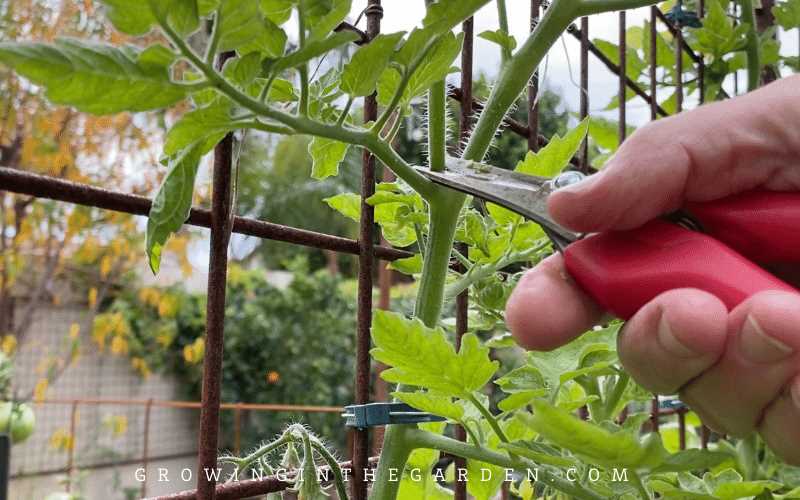
In June, pests can become a significant problem in the garden. Inspect your plants regularly for signs of pest infestation, such as chewed leaves or holes, and take appropriate action. Use organic pest control methods whenever possible to avoid harming beneficial insects.
Fertilize Regularly
To ensure your plants have the necessary nutrients for optimal growth, fertilize them regularly in June. Use a balanced organic fertilizer or compost to provide a slow-release of nutrients. Follow the recommended application rates for each type of plant.
Harvest Ripe Fruits
In June, many fruits will begin to ripen. Monitor your fruit trees and bushes closely and harvest ripe fruits promptly to avoid spoilage or attracting pests. Enjoy the delicious flavors of freshly picked fruit and preserve any surplus for later use.
Sow Summer Vegetables
If you haven’t already done so, June is the time to sow summer vegetables in your garden. Plant heat-loving crops such as tomatoes, peppers, cucumbers, and beans. Follow the planting instructions on the seed packets or transplant young seedlings for quicker results.
Support Tall Plants
As your plants grow taller in June, it’s important to provide support to prevent them from bending or breaking under their weight. Use stakes, cages, or trellises to support tall plants, such as tomatoes or climbing beans. This will help maintain the health and productivity of the plants.
Monitor for Disease
Disease can quickly spread in warm and moist conditions. Inspect your plants regularly for any signs of disease, such as spots or discoloration on leaves, and take necessary action. Remove any infected plant parts and consider using organic fungicides to prevent the spread of disease.
Mulch to Conserve Moisture
Applying mulch around your plants can help conserve moisture in the soil and suppress weed growth. Spread a layer of organic mulch, such as straw, wood chips, or compost, around the base of your plants. This will also provide insulation to the root system.
Thin Out Fruits
If your fruit trees are carrying a heavy crop, thin out the fruits in June to promote better growth and development. Remove excess fruits, leaving a few inches between each remaining fruit. This will ensure that the tree’s energy is directed towards producing larger and sweeter fruits.
Prune and Deadhead Flowers
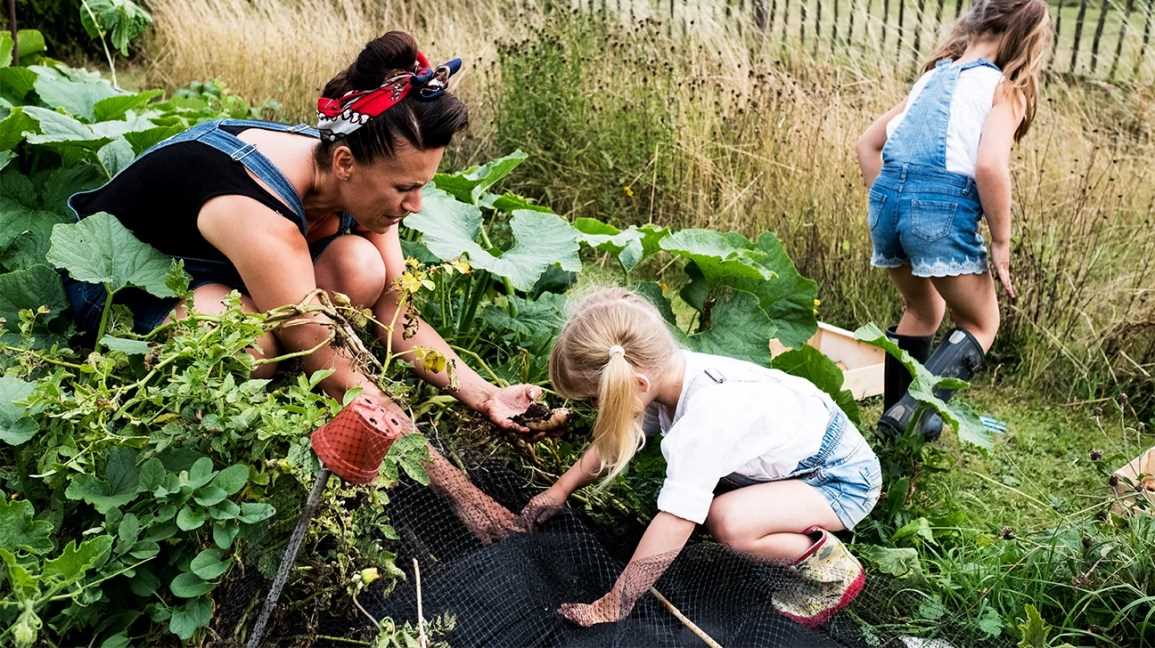
For flowering plants in your garden, prune spent blooms and remove any dead or dying foliage in June. This will encourage new growth and prolong the blooming period. Deadheading also helps redirect the plant’s energy towards producing more flowers.
Rotate Crops
June is a good time to start planning for crop rotation in your garden. As you harvest crops, prepare the beds for the next planting season by loosening the soil and adding organic matter. Rotate your crops to prevent soil-borne diseases and nutrient depletion.
| Task | Due Date |
|---|---|
| Monitor moisture levels | Throughout June |
| Prune and train fruit trees | Early June |
| Protect from pests | Ongoing |
| Fertilize regularly | Every 2-4 weeks |
| Harvest ripe fruits | As fruits ripen |
| Sow summer vegetables | Early June |
| Support tall plants | Ongoing |
| Monitor for disease | Ongoing |
| Mulch to conserve moisture | Mid-June |
| Thin out fruits | Mid-June |
| Prune and deadhead flowers | Throughout June |
| Rotate crops | Late June |
Optimize Your Vegetable Patch for Productivity
If you want to maximize the productivity of your vegetable patch this June, there are several steps you can take to optimize your garden. By planning ahead and following these tips, you can ensure that your plants thrive and produce a bountiful harvest.
1. Plan Your Layout
Before planting, take some time to plan the layout of your vegetable patch. Consider the amount of space each plant requires and the ideal amount of sunlight they need. This will help you optimize the planting arrangement and ensure that each plant has enough room to grow.
2. Prepare the Soil
Healthy soil is essential for growing productive vegetables. Before planting, make sure to prepare the soil by removing any weeds and adding organic matter such as compost or manure. This will provide your plants with the nutrients they need to thrive.
3. Start Seeds Indoors
To get a head start on the growing season, consider starting your vegetable seeds indoors. This will give your plants a better chance of success and allow you to transplant them into your garden when they are strong and healthy.
4. Use Companion Planting
Companion planting involves planting certain vegetables together to reap the benefits of their natural interactions. Some plants repel pests, while others attract beneficial insects or enhance the flavor of neighboring plants. Take advantage of companion planting to optimize the productivity of your vegetable patch.
5. Implement Crop Rotation
Rotating your crops from year to year is crucial for maintaining soil health and minimizing pest and disease pressure. By moving crops around, you reduce the risk of nutrient depletion and allow the soil to replenish itself naturally.
6. Provide Adequate Water and Mulch
Water is essential for plant growth, so make sure your vegetable patch receives enough moisture. Mulching around your plants can help retain soil moisture, suppress weeds, and regulate soil temperature, optimizing growing conditions and reducing your water usage.
7. Stake and Support Your Plants
Some plants, such as tomatoes and beans, benefit from staking or other support structures. By providing vertical support, you prevent plants from sprawling on the ground, improve air circulation, and make it easier to harvest vegetables. This can help increase productivity by reducing the risk of diseases and pests.
8. Monitor and Manage Pests
Pests can harm your vegetables and reduce their productivity. Regularly inspect your plants for signs of pest damage and take appropriate measures to manage them. This can include natural methods like handpicking pests or using organic pest control products.
9. Practice Regular Maintenance
Regular maintenance tasks, such as removing weeds, pruning, and monitoring for diseases, are essential for keeping your vegetable patch productive. Set aside time each week to tend to your plants and address any issues that may arise.
10. Harvest Continuously
To ensure a continuous supply of fresh vegetables, harvest regularly. This encourages plants to keep producing and prevents overripe or spoiled vegetables. Harvesting at the right time also ensures that you enjoy your vegetables when they are at their peak flavor and nutritional value.
11. Preserve Surplus Harvest
If you find yourself with a surplus of vegetables, consider preserving them for future use. Methods like canning, freezing, or pickling can help extend the shelf life of your produce and allow you to enjoy them throughout the year.
12. Learn from Your Experience
Every gardening season is a learning opportunity. Keep a diary or record of your experiences, successes, and failures. This knowledge will help you optimize your vegetable patch in the future and ensure even greater productivity.
By implementing these tips, you can optimize your vegetable patch for increased productivity this June. Remember to plan ahead, provide proper care, and learn from your experiences to create a thriving garden that produces an abundance of fresh, healthy vegetables.
Plan and Execute Effective Weed Control
1. Identify the Common Weeds
Before you start with weed control, it’s important to familiarize yourself with the common weeds in your garden and vegetable patch. This will help you identify them correctly and choose the most effective control methods.
2. Practice Good Garden Maintenance
Maintaining a healthy garden is one of the best ways to prevent weed growth. Ensure proper watering, fertilization, and mulching to keep your plants healthy and suppress weed growth.
3. Regularly Monitor Your Garden
Make it a habit to inspect your garden regularly for any signs of weed growth. Early detection will make weed control easier and prevent them from spreading and taking over your garden.
4. Hand-Pull Weeds
For small weed infestations, hand-pulling is an effective and eco-friendly method of control. Make sure to remove the entire weed, including the roots, to prevent regrowth.
5. Use Mulch
Applying a layer of organic mulch around your plants can help suppress weed growth by blocking sunlight and preventing weed seeds from germinating.
6. Utilize Weed Barriers
Placing weed barriers, such as landscape fabric or cardboard, between rows or around plants can prevent weeds from growing. Ensure proper installation and secure the edges to prevent weed penetration.
7. Apply Herbicides
If the weed infestation is severe or hand-pulling is not feasible, you may consider using herbicides. Choose a selective herbicide that targets the specific types of weeds in your garden, and follow the instructions carefully.
8. Consider Organic Weed Control Methods
If you prefer organic gardening, there are several natural and homemade weed control methods you can try. These include vinegar spray, boiling water, or using a weed torch to kill weeds.
9. Avoid Tilling Too Deep
Tilling can bring buried weed seeds to the surface, promoting their germination. Avoid tilling too deeply and only disturb the top layer of soil when necessary.
10. Stay Vigilant with Weed Control
Weeds are persistent, and new ones can quickly occupy your garden if not controlled. Make weed control a regular part of your gardening routine to stay on top of the problem.
11. Dispose of Weeds Properly
When removing weeds from your garden, ensure they are properly disposed of to prevent re-infestation. Bag them up and dispose of them in the trash or compost them in a controlled environment.
12. Keep Learning and Improving
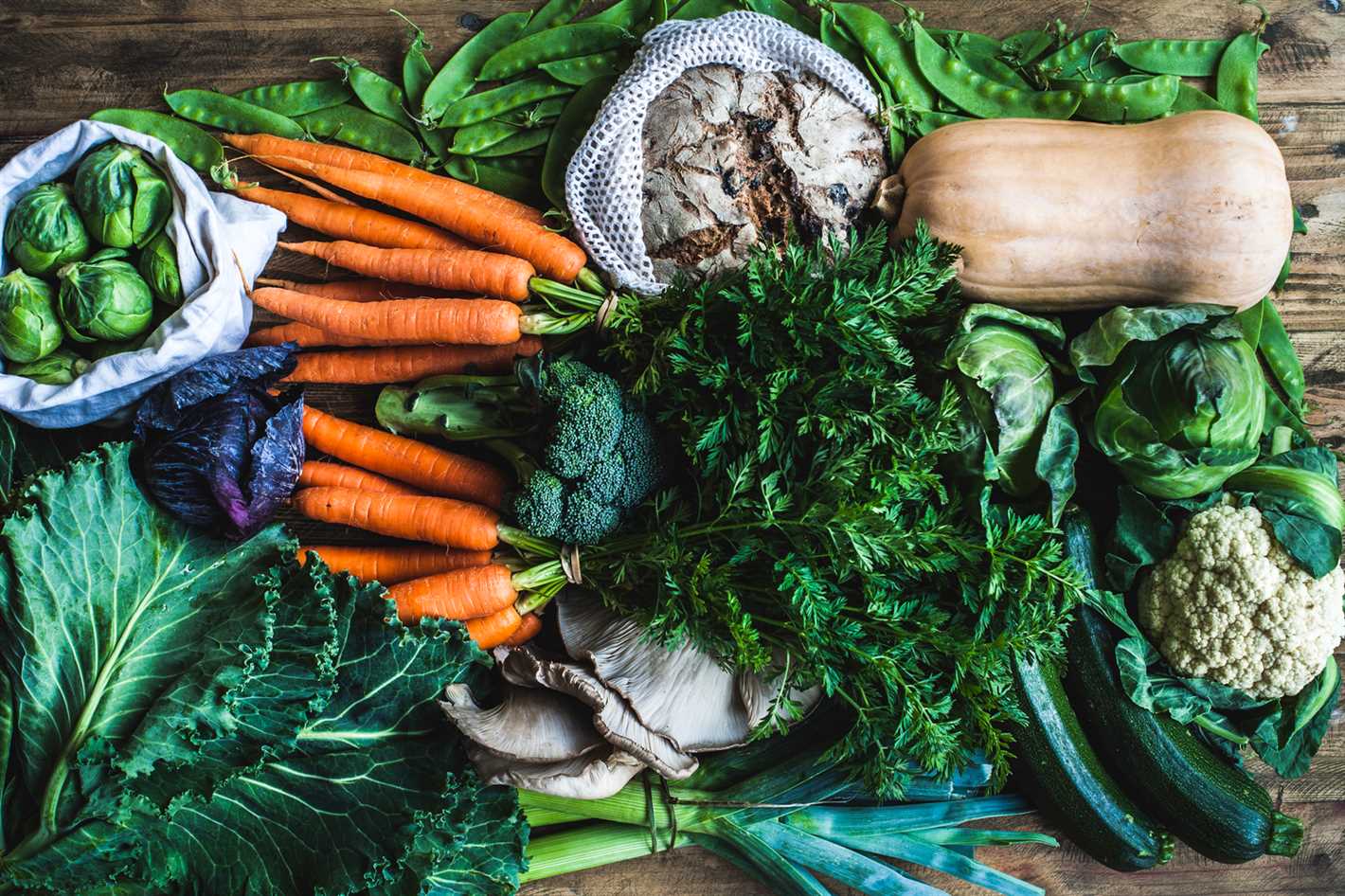
Weed control methods can vary depending on your garden’s specific conditions and weed types. Continuously educate yourself on new techniques and strategies to improve your weed control efforts.
By planning and executing effective weed control methods, you can ensure a productive garden and vegetable patch with minimal weed interference.
Implement Efficient Watering Techniques
Proper watering is essential for a healthy garden and vegetable patch. Implementing efficient watering techniques will not only save water but also promote the growth and productivity of your plants. Here are some tips to help you water your garden effectively:
1. Water at the Right Time
Water your plants early in the morning or in the evening to minimize evaporation. Avoid watering during the hottest part of the day, as the water will evaporate quickly without being absorbed by the plants.
2. Use Drip Irrigation
Drip irrigation systems deliver water directly to the roots of plants, reducing water waste through evaporation and runoff. This method also helps prevent diseases by keeping the foliage dry.
3. Mulch Your Soil
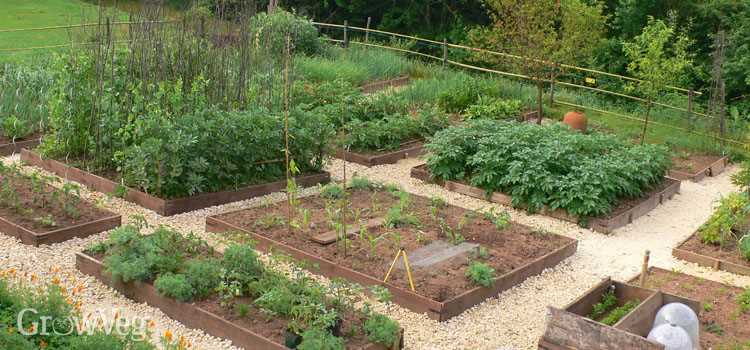
Applying a layer of mulch around your plants helps retain moisture in the soil, reducing the need for frequent watering. Mulch also helps regulate soil temperature and suppresses weed growth.
4. Water Deeply and Infrequently
Instead of lightly watering your plants every day, give them a deep watering once or twice a week. This encourages the roots to grow deeper, making the plants more resilient to drought conditions.
5. Use a Watering Can or Hose Nozzle
When hand-watering, use a watering can or hose nozzle with a gentle spray to target the root zone of your plants. Avoid using sprinklers, as they can lead to water wastage through evaporation and overspray.
6. Install a Rain Barrel
To further conserve water, consider installing a rain barrel to collect rainwater. This water can be used to irrigate your garden, reducing reliance on municipal water sources.
7. Group Plants with Similar Water Requirements
Design your garden layout in a way that groups plants with similar water needs together. This allows you to water them more efficiently and avoid overwatering or underwatering certain plants.
8. Monitor Soil Moisture
Regularly check the moisture level of your soil to determine when to water. Stick your finger into the soil up to your knuckle – if it feels dry, it’s time to water. Invest in a soil moisture meter for a more accurate reading.
9. Avoid Watering Leaves
When watering, try to avoid getting water on the leaves of your plants. Wet foliage can encourage the growth of diseases and fungal infections. Water directly at the base of the plants.
10. Consider Using a Timer
If you have a busy schedule or tend to forget to water, consider using a timer for your irrigation system. This will ensure that your plants receive water consistently and at the right time.
11. Be Mindful of Runoff

When watering, pay attention to any runoff. If you notice water pooling or running off, it means you have applied too much water. Adjust your watering technique to prevent excessive runoff and water waste.
12. Adjust Watering Based on Weather Conditions
During periods of rain or cooler weather, adjust your watering schedule accordingly. Plants may require less water during these times, so be mindful and avoid overwatering.
By implementing these efficient watering techniques, you can ensure that your garden and vegetable patch thrive while conserving water resources.
Protect Your Garden from Pests and Diseases
Gardens are prone to pests and diseases that can damage your plants and crops. It’s important to take preventative measures to protect your garden and ensure a healthy and productive growing season. Here are some tips to help you keep pests and diseases at bay:
1. Identify Common Garden Pests and Diseases
Before you can effectively protect your garden, it’s important to familiarize yourself with common garden pests and diseases in your area. This will help you recognize the signs and symptoms early on, allowing you to take action swiftly.
2. Practice Good Garden Hygiene
Keeping your garden clean and free of debris can significantly reduce the risk of pests and diseases. Regularly remove weeds, fallen leaves, and dead plant material. Clean your tools after each use to prevent the spread of pathogens.
3. Use Organic Pest Control Methods
Avoid using harsh chemical pesticides that can harm beneficial insects and the environment. Instead, opt for organic pest control methods such as companion planting, using insect-repelling plants, and employing natural predators like ladybugs and lacewings.
4. Install Physical Barriers
Physical barriers can be an effective way to keep pests out of your garden. Use netting to protect plants from birds and insects, and install fences or barriers to prevent larger animals from accessing your crops.
5. Rotate Crops
Rotating your crops each year can help prevent the buildup of pests and diseases in the soil. Different plants have different nutrient requirements and attract different pests, so rotating crops can disrupt the life cycle of pests and reduce the risk of diseases.
6. Monitor Your Plants Regularly
To catch any pests or diseases early on, it’s important to regularly inspect your plants. Look for signs of damage, discoloration, wilting, or unusual growth patterns. Prompt identification and treatment can save your plants from further damage.
7. Provide Adequate Water and Nutrients
Healthy plants are better equipped to fight off pests and diseases. Ensure that your plants receive adequate water, sunlight, and nutrients. Avoid overwatering, as it can create a damp environment that is favorable for disease development.
8. Practice Crop Rotation
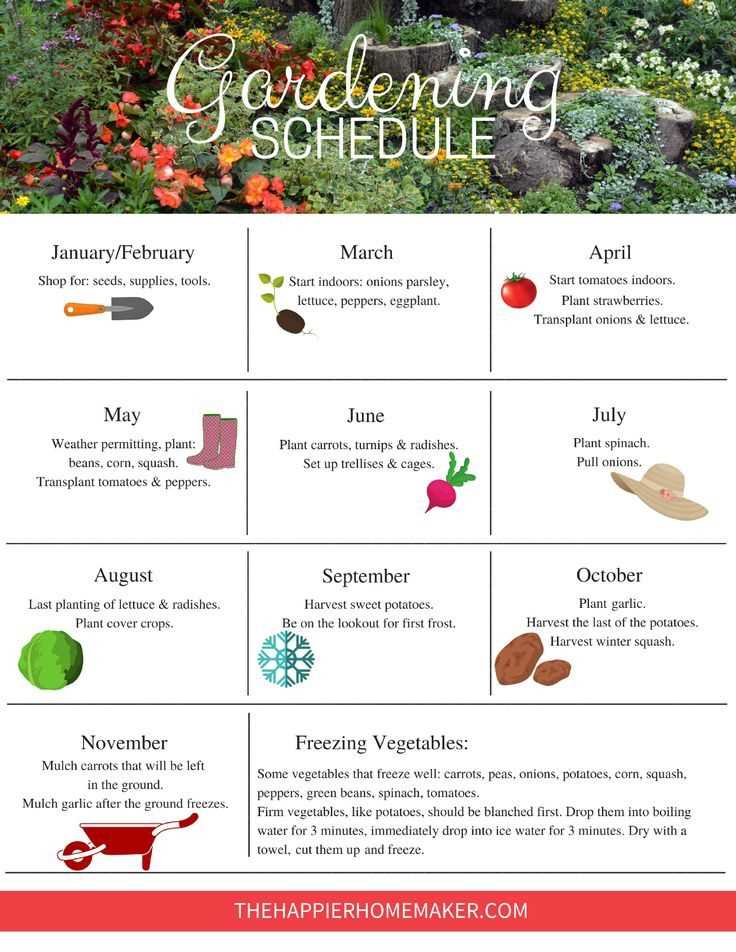
Rotate your crops each planting season to prevent the buildup of pests and diseases. Different plants have different nutrient requirements and attract different pests, so rotating crops can disrupt the life cycle of pests and reduce the risk of diseases.
9. Use Natural Remedies
There are many natural remedies available to control pests and diseases. Neem oil, insecticidal soaps, and garlic sprays can be effective against common garden pests. Research natural remedies specific to the pests and diseases in your area.
10. Encourage Beneficial Insects
Beneficial insects, such as ladybugs, lacewings, and praying mantises, can help control pests in your garden. Plant flowers and herbs that attract beneficial insects and provide them with a habitat where they can thrive.
11. Quarantine New Plants
When introducing new plants to your garden, it’s important to quarantine them for a period of time to ensure they are free from pests and diseases. This will prevent the spread of any potential problems to your existing plants.
12. Stay Vigilant
Pests and diseases can quickly multiply and spread in your garden, so it’s essential to stay vigilant. Regularly monitor your plants, address any issues promptly, and adjust your pest control strategies as needed.
By implementing these protective measures, you can minimize the risk of pests and diseases in your garden and promote a healthy and productive growing season.
Maintain and Care for Your Garden Tools
- Regularly clean your garden tools to remove dirt and debris. This helps prevent rust and keeps them functioning properly.
- Inspect your tools for any damage or wear and tear. Replace or repair any broken parts.
- Keep your tools dry to prevent rust. Store them in a clean, dry place.
- Sharpen cutting tools, such as pruning shears and loppers, regularly to ensure clean cuts.
- Oil moving parts, such as hinges and joints, to keep them well lubricated.
- Check the handles of your tools for cracks or splinters. Sand them down and apply linseed oil to keep them in good condition.
- Use a wire brush or steel wool to remove rust from metal tools. Apply rust-inhibiting spray to protect them.
- Disinfect your tools if you notice any signs of plant disease or pests. Use a solution of bleach or hydrogen peroxide.
- Organize your tools in a way that is convenient for you. Consider using a tool rack or toolbox to keep them easily accessible.
- Label your tools with your name or initials to avoid confusion if you share them with others.
- Keep a list of the tools you have and make note of any replacements or new purchases you need to make.
- Stay up to date with new tools and technology that can help simplify your gardening tasks.
Harvest and Preserve Your Garden’s Bounty
As June arrives, it’s time to start reaping the rewards of your hard work in the garden. Here are some essential tasks to help you gather and preserve the delicious produce from your garden:
- Harvest ripe fruits and vegetables: Check your garden regularly for mature produce, and harvest them when they are ready. This will not only ensure the best flavor and quality but also create space for new growth.
- Use proper harvesting techniques: Use clean, sharp tools to harvest vegetables, and gentle handling to avoid damage. For fruits, pick them carefully to avoid bruises and handle them with care.
- Preserve excess produce: If you have more produce than you can consume, consider preserving them for later use. You can freeze fruits and vegetables, can them, or make delicious homemade jams and pickles.
- Dry herbs and flowers: If you have an abundance of herbs and flowers, dry them for future use. Hang them upside down in a warm, well-ventilated area until completely dried. Store them in airtight containers to retain their flavor and fragrance.
- Share your bounty: If you have more than you can handle, consider sharing your garden’s bounty with friends, family, neighbors, or even local food banks. It’s a great way to spread happiness and reduce food waste.
Don’t let your hard work go to waste! By harvesting and preserving your garden’s bounty, you can continue to enjoy the fruits of your labor long after the growing season is over.
Prepare Your Garden for the Summer Heat
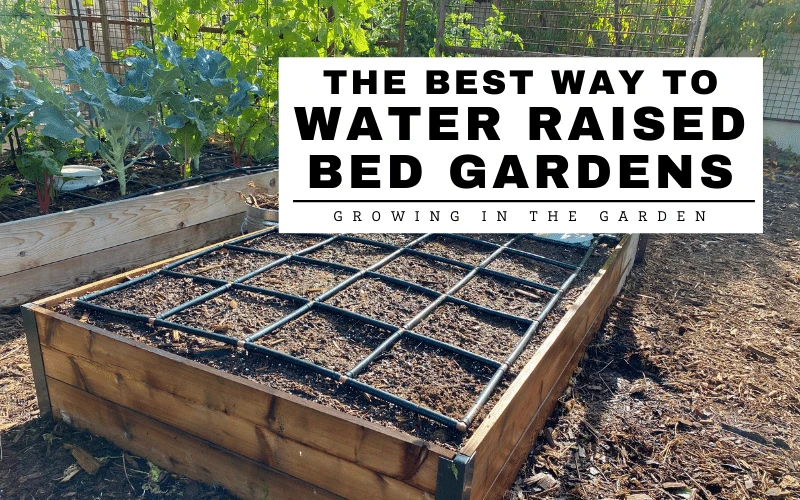
1. Watering Schedule
Establish a regular watering schedule for your garden during the hot summer months. Water deeply and infrequently to promote deep root growth and conserve water. Consider using a drip irrigation system or soaker hoses to deliver water directly to the roots.
2. Mulching
Apply a layer of mulch around your plants to help conserve moisture and regulate soil temperature. Organic mulches such as wood chips or straw can also add nutrients to the soil as they break down.
3. Shade Cloth
If you have delicate or heat-sensitive plants, consider using shade cloth to protect them from the intense sun. Place the cloth over a frame to create a shade structure or drape it directly over plants during the hottest part of the day.
4. Pruning
Remove any dead or damaged branches from trees and shrubs to prevent them from falling during summer storms. Prune summer-flowering plants after they have finished blooming to encourage new growth.
5. Fertilizing
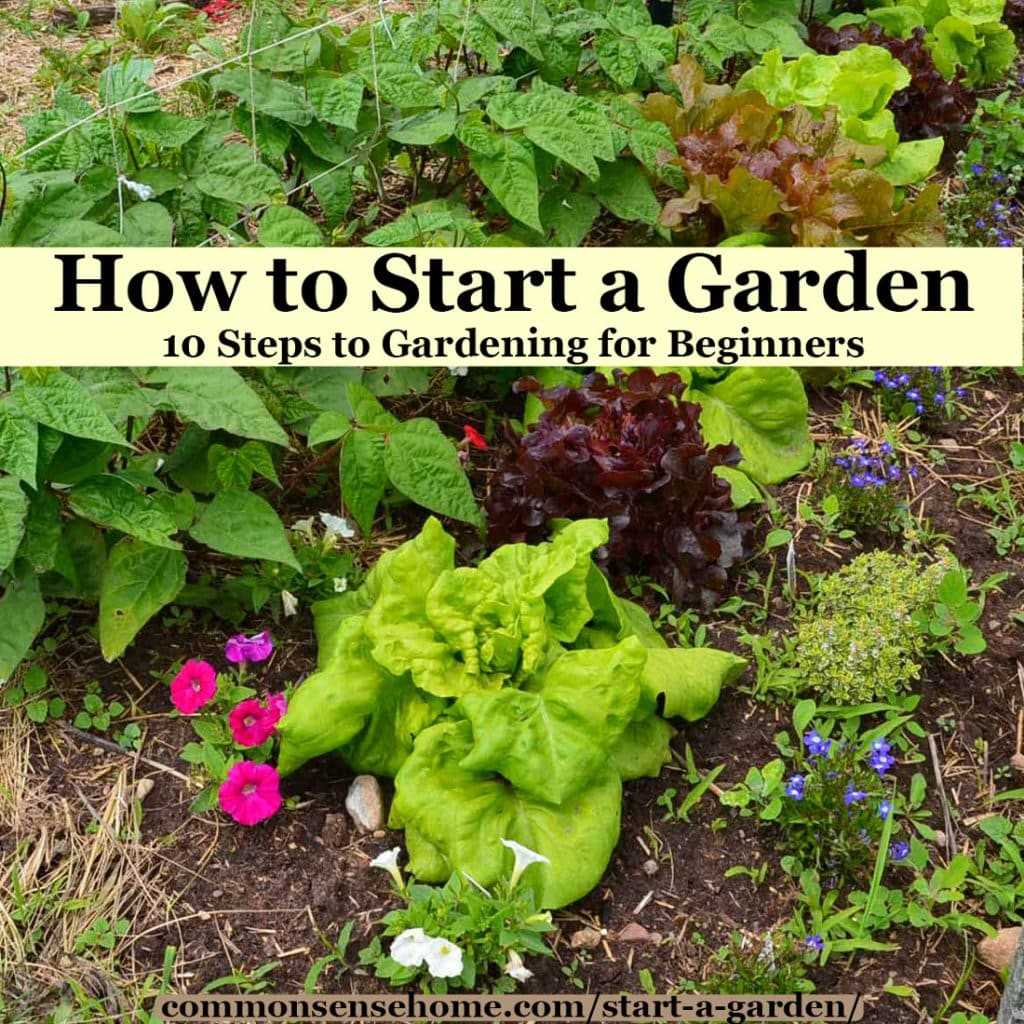
Apply a slow-release fertilizer to your garden beds and potted plants to provide continuous nutrition throughout the summer. Choose a fertilizer specifically formulated for the types of plants you are growing.
6. Weed Control
Keep up with regular weeding to prevent weeds from competing with your plants for water and nutrients. Mulching can also help to suppress weed growth.
7. Pest Management
Monitor your garden regularly for signs of pests such as aphids, snails, or caterpillars. Use organic pest control methods whenever possible to minimize harm to beneficial insects and wildlife.
8. Harvesting
Continue to harvest fruits, vegetables, and herbs as they mature. Regular harvesting promotes further growth and prevents plants from becoming overcrowded.
9. Preserve Your Harvest
If you have an abundance of produce, consider preserving it through canning, freezing, or drying. This will allow you to enjoy the fruits of your labor throughout the year.
10. Monitor Soil Moisture
Regularly check the moisture levels in your garden beds and containers. The hot summer weather can quickly deplete soil moisture, so adjust your watering schedule accordingly.
11. Provide Shade for Yourself
Don’t forget to create a shady spot for yourself to relax and enjoy your garden during the hot summer months. Consider adding a pergola, umbrella, or outdoor seating area to provide relief from the sun.
12. Stay Hydrated
Lastly, remember to stay hydrated while working in the garden. Take frequent breaks and drink plenty of water to avoid dehydration in the summer heat.
Questions and Answers:
What are some tasks that need to be done in the garden in June?
Some tasks that need to be done in the garden in June include planting summer vegetables, deadheading flowers, weeding, mulching, and watering regularly.
Is it necessary to prune plants in June?
Pruning plants in June is generally not necessary, as most plants have already finished their growth for the season. However, if there are any dead or damaged branches, they can be pruned off.
How often should I water my garden in June?
The frequency of watering your garden in June depends on several factors, such as the type of plants you have and the climate in your area. In general, it is recommended to water deeply once or twice a week, rather than shallowly every day.
Should I fertilize my garden in June?
If you haven’t already fertilized your garden in the spring, June is a good time to apply a slow-release fertilizer to ensure your plants have enough nutrients for the rest of the growing season. Be sure to follow the instructions on the fertilizer packaging.
How can I prevent pests in my garden in June?
To prevent pests in your garden in June, you can use techniques such as companion planting, regular inspection for signs of pests, and cultural practices like proper watering and cleaning up garden debris. Organic pest control methods, such as using insecticidal soaps or neem oil, can also be effective.
What are some summer vegetables that can be planted in June?
Some summer vegetables that can be planted in June include tomatoes, peppers, cucumbers, zucchini, beans, and corn. Make sure to check the planting recommendations for your specific area, as the timing may vary.
Can I still plant flowers in June?
While it is generally better to plant flowers in the spring or fall, you can still plant certain flowers in June. Look for heat-tolerant varieties that can withstand the summer heat. Water the newly planted flowers regularly to help them establish and thrive.







